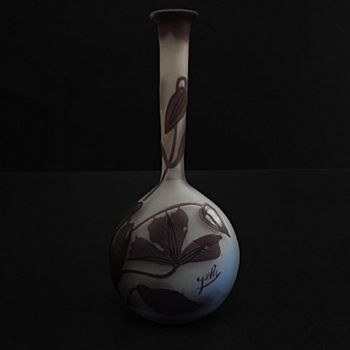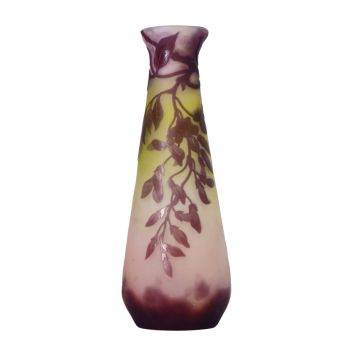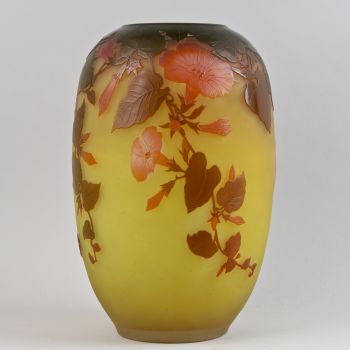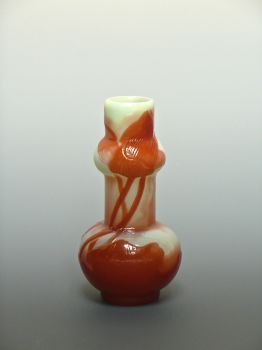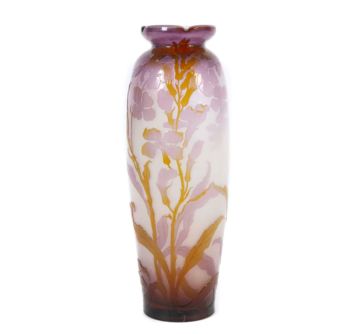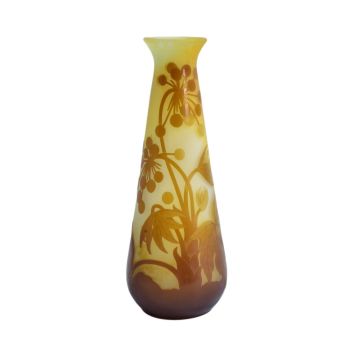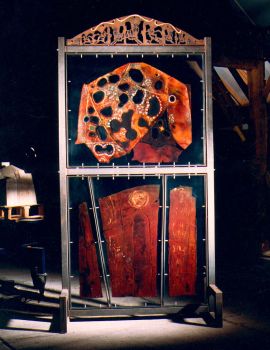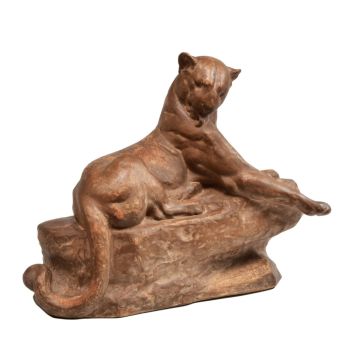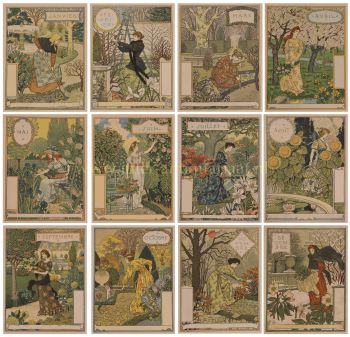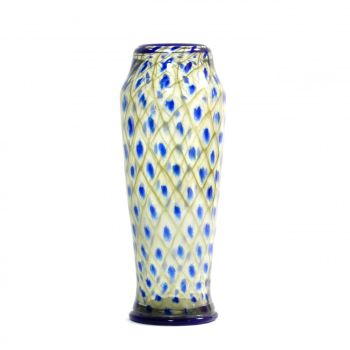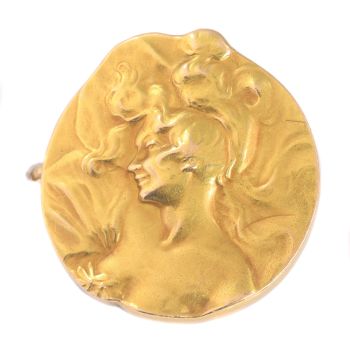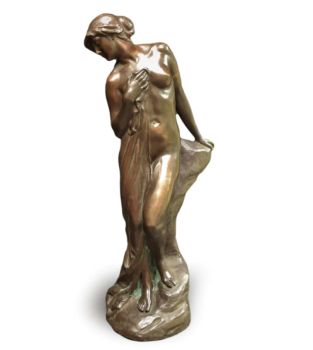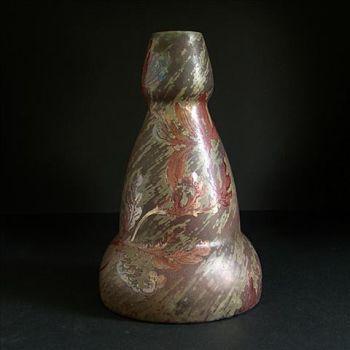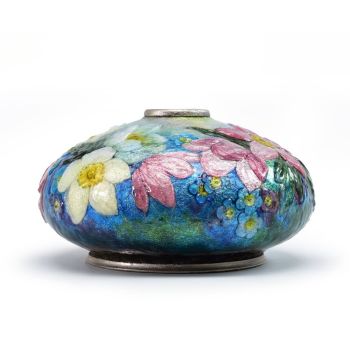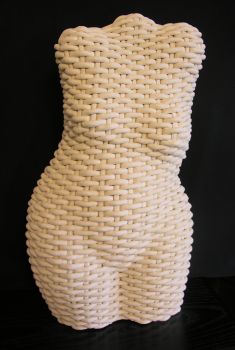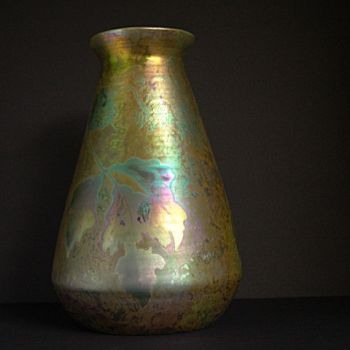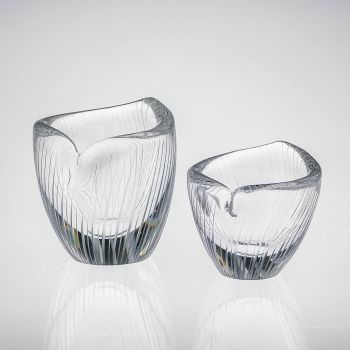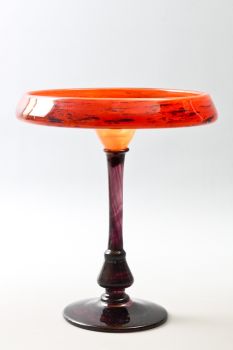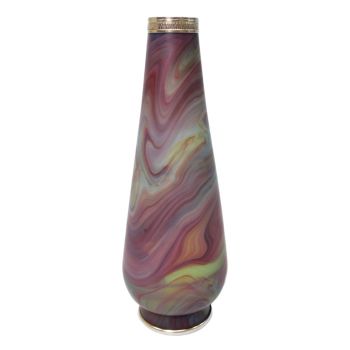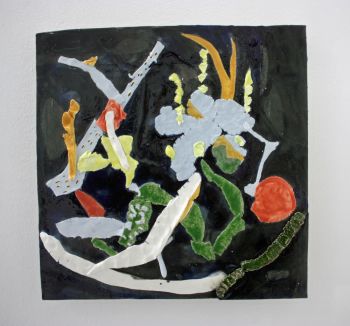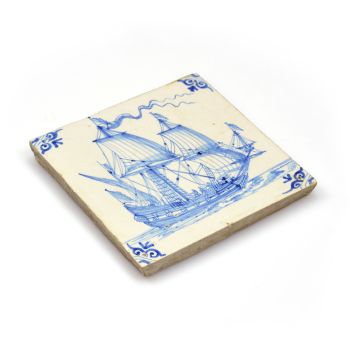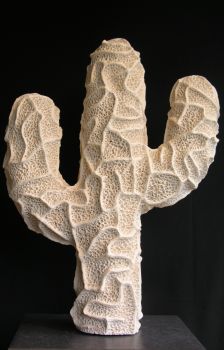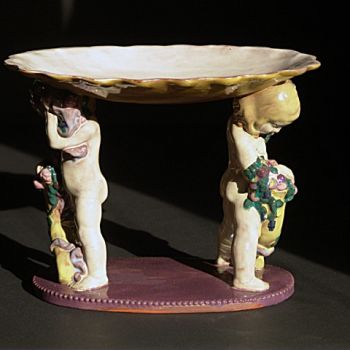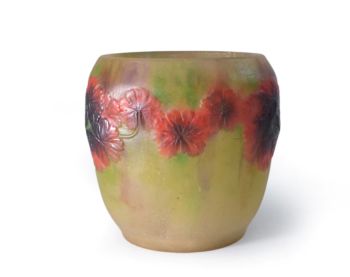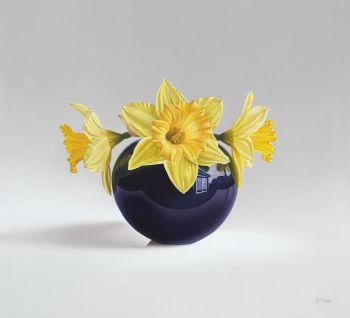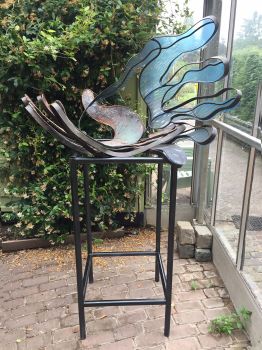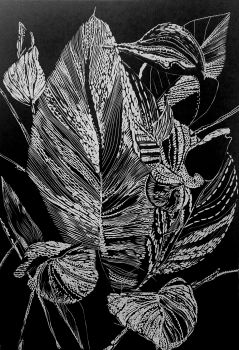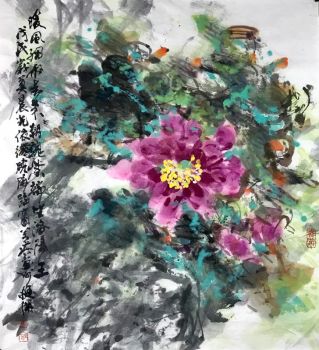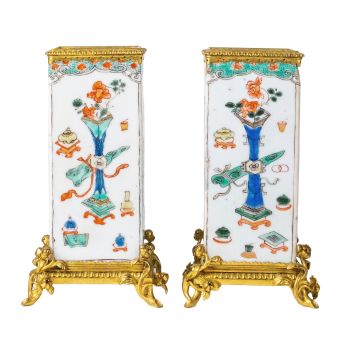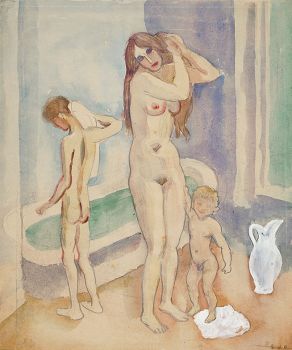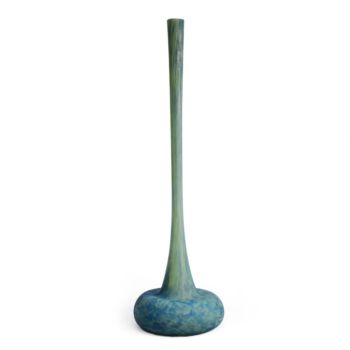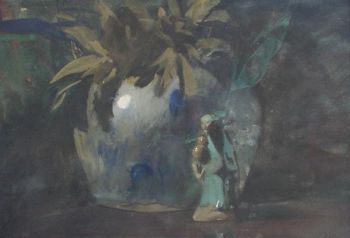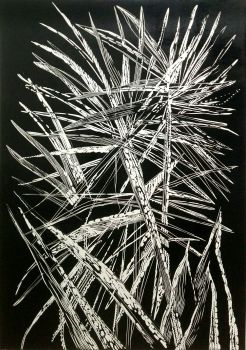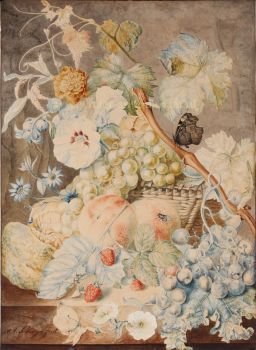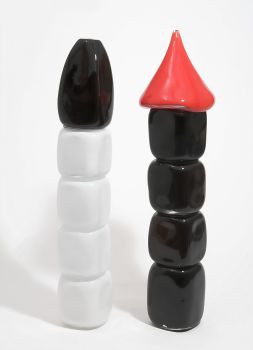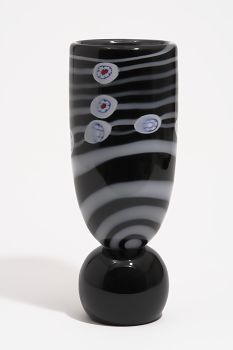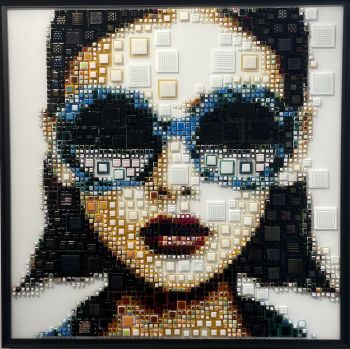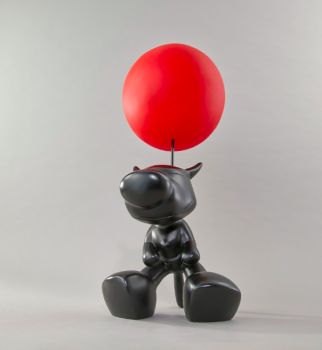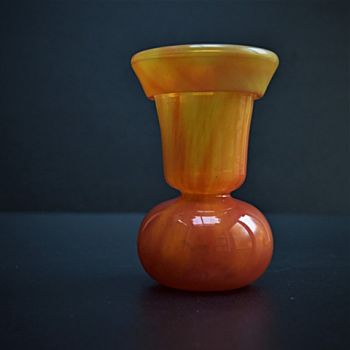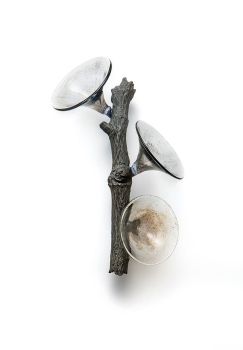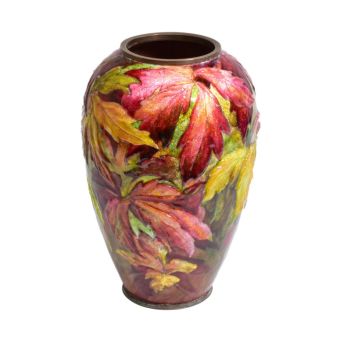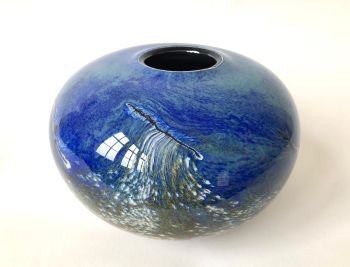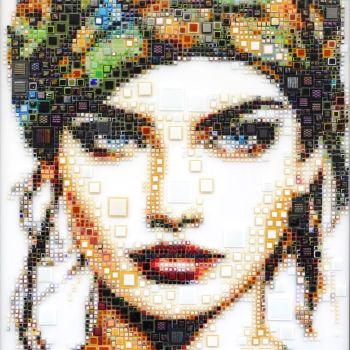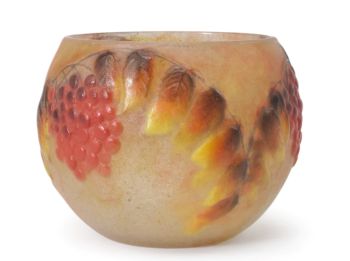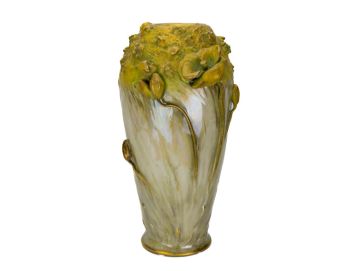Relief series “Kersen” vaas 1927
Emile Gallé
Glass
28 ⨯ 14 cm
Price on request
Antiques Emporium
- About the artworkDeze Etablissement Gallé vaas is gemaakt omstreeks 1927 in de blow-out techniek in een decor van kersen.
De vaas is gemaakt van helder glas met dichte oranje en gele pigmentpoederinsluitsels en auberginekleurige overlay. De decoratie zijn kersentakjes, met kersen en bladeren in geperst hoogreliëf en etstechniek. Het heeft een mat geëtste ondergrond met een gepolijst reliëf. Het ronde voetstuk en de mond zijn eveneens overtrokken in aubergine/blauw. De vaas is gesigneerd met een geëtste signatuur van “Gallé” op de achterzijde tussen de decoratie. - About the artist
Emile Gallé was a French artist in glass, wood and ceramics. After several apprenticeships in various European cities, Weimar and Meisenthal amongst others, Emile Gallé became a partner at his father’s glass and faience decoration business in 1867.
Ten years later, he took over the family business and extended its activities to cabinet making in 1885. Previously acknowledged at the Clay and Glass Exposition in 1884, Emile Gallé was honored at the 1889 Paris World Fair with three rewards for his ceramics, glasswork, and furniture. Unfortunately, and to the great regret of Emile Gallé, ceramic work was no longer popular amongst the public, thus he oriented his focus to glasswork, a domain in which he developed and created new fabrication procedures. His research lead to the registration of two patents in 1898, one of which concerned the glass marquetry and the other on glass finish.
His work expresses throughout multiple references his diverse interests, in which nature plays a dominant, but not exlusive, role. His patriotic and political commitments were best expressed at the Paris World Fairs of 1889 and 1900 in such pieces as The Rhine Table (which calls for the return of Alsace-Lorraine to France) and the spectacular installation of The seven pitchers Marjolaine (for the rehabilitation of Dreyfus).Involved early on in the renewal of decorative arts, Emile Gallé distributed in his French, German and English warehouses quality mass-produced work thanks to the industrialization of production. In 1901, he was the founder and the first president of the Ecole de Nancy, the Alliance Provinciale des Industries d’Art.
Are you interested in buying this artwork?
Artwork details
Related artworks
- 1 - 4 / 10
- 1 - 4 / 24
Unknown artist
Cristallo façon de Venise Drinking Glass1600 - 1650
Price on requestPeter Korf de Gidts - Antiquairs
1 - 4 / 24Jan Voerman sr
Still Life with flowers in a Chinese figurine1850 - 1900
Price on requestKunsthandel Pygmalion
1 - 4 / 24Johann Loetz (Lötz) Witwe Klostermühle
Johann Loetz Witwe - Phänomen Genre 7773 – Orange1900 - 1910
Price on requestAntiques Emporium
1 - 4 / 24Johann Loetz (Lötz) Witwe Klostermühle
Johann Loetz Witwe - Phänomen Genre 7773 – Orange1900 - 1910
Price on requestAntiques Emporium
Frères Daum
Daum Nancy – “Paysage Soleil Couchant” vase with two applied handles1900 - 1910
Price on requestAntiques Emporium
Amalric Walter
Amalric Walter & Henri Bergé – Crabe plumier1920 - 1929
Price on requestAntiques Emporium
Gabriel Argy-Rousseau
Gabriël Argy-Rousseau – Crabes et Algues vase – 19201920 - 1929
Price on requestAntiques Emporium
1 - 4 / 12







